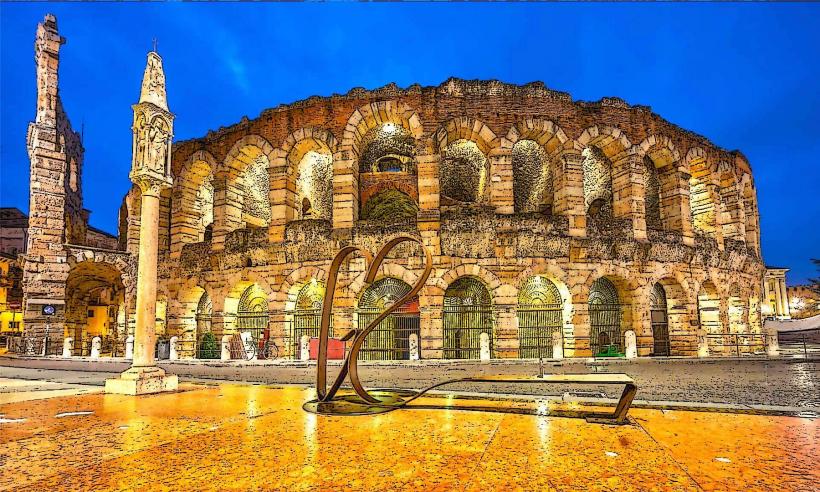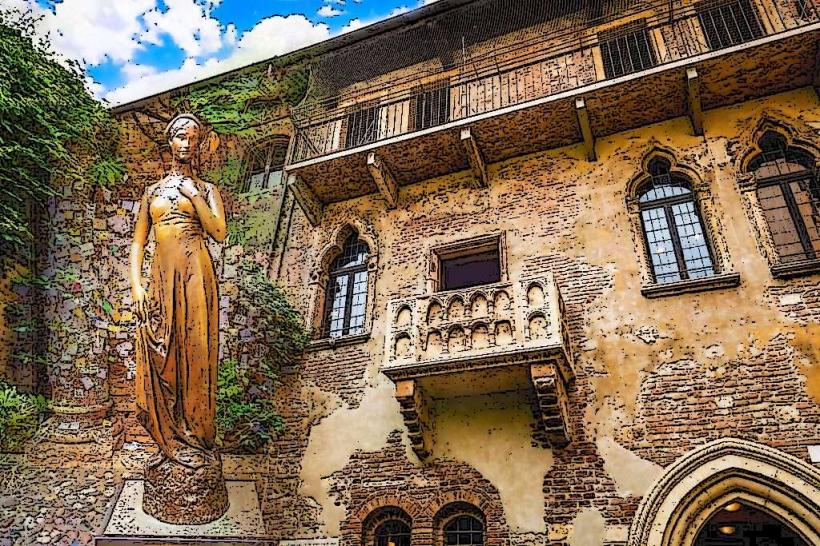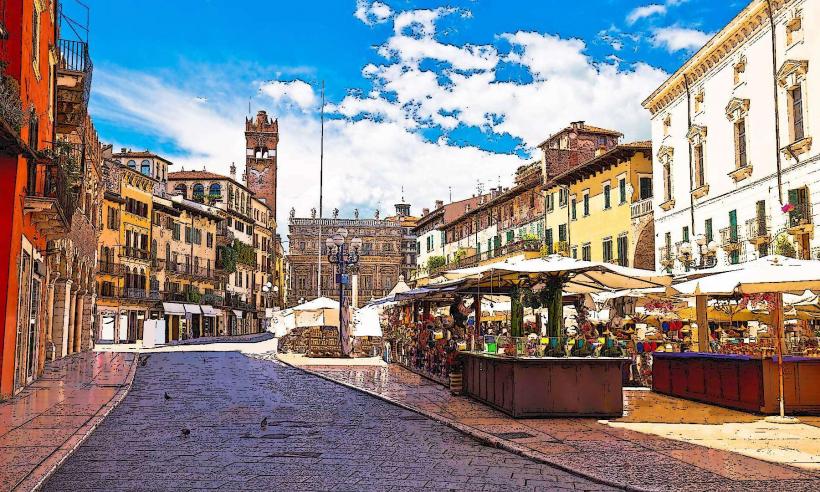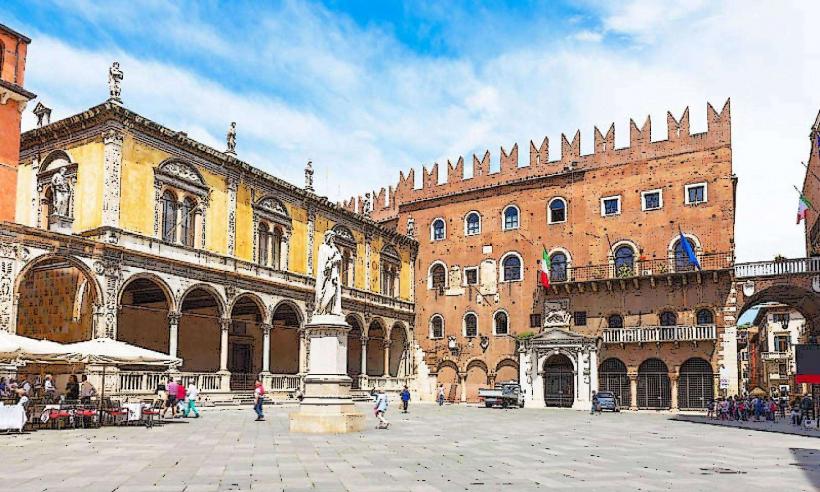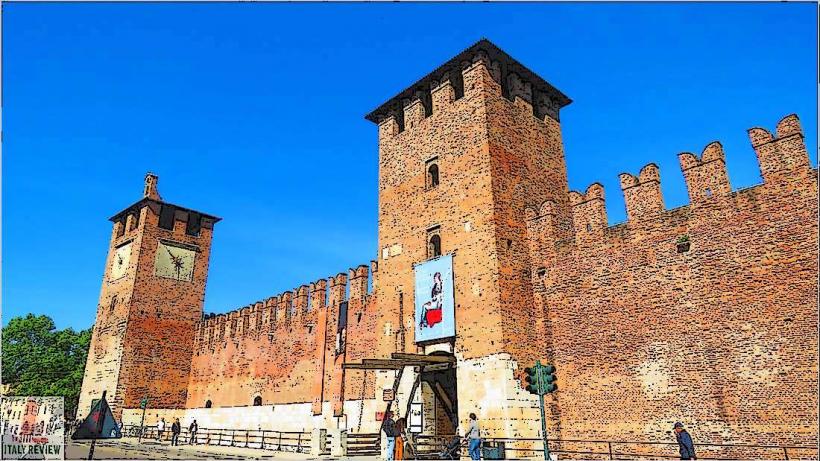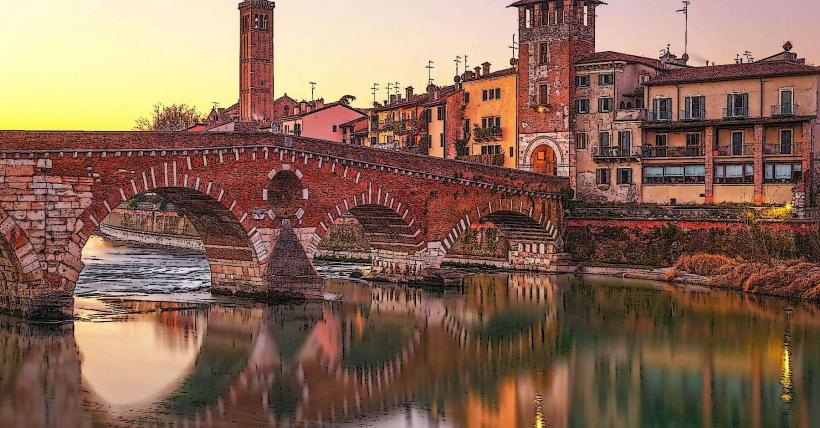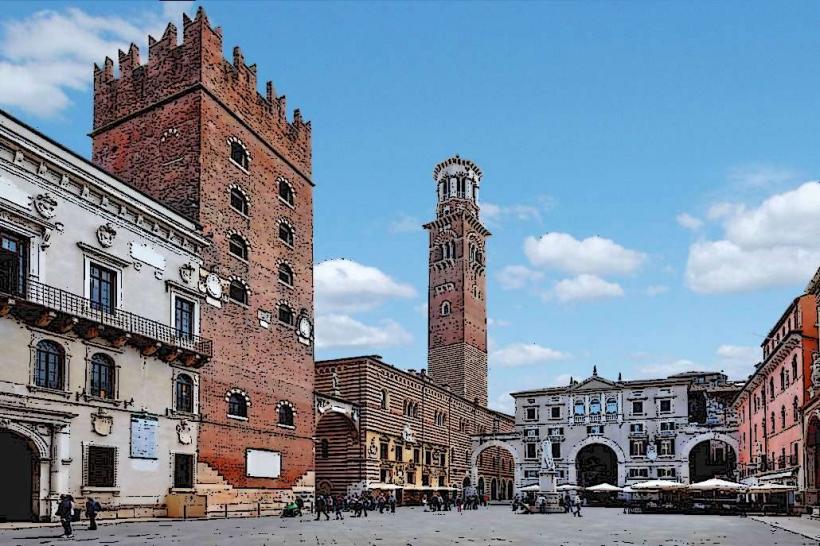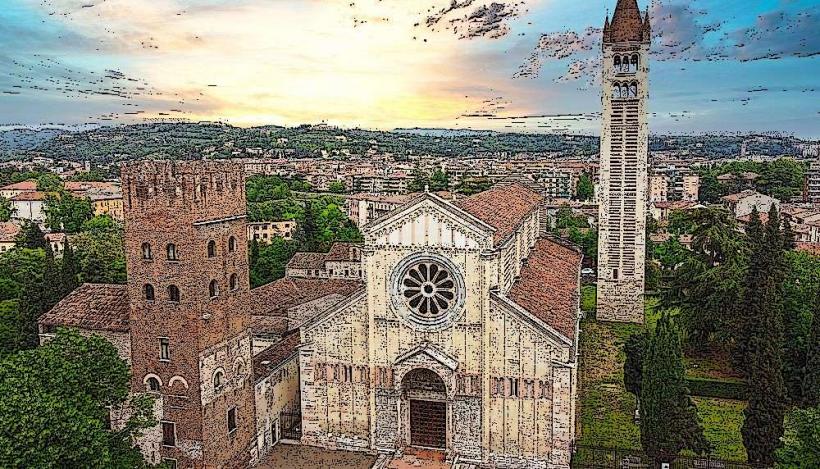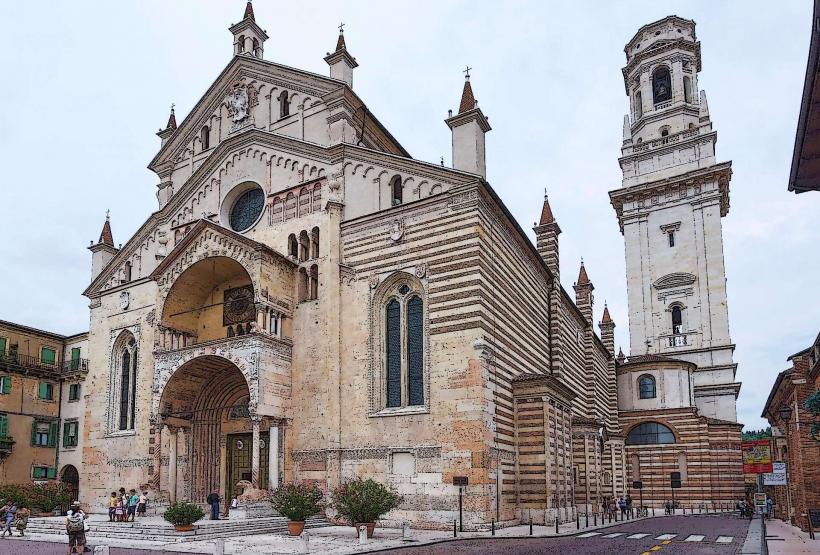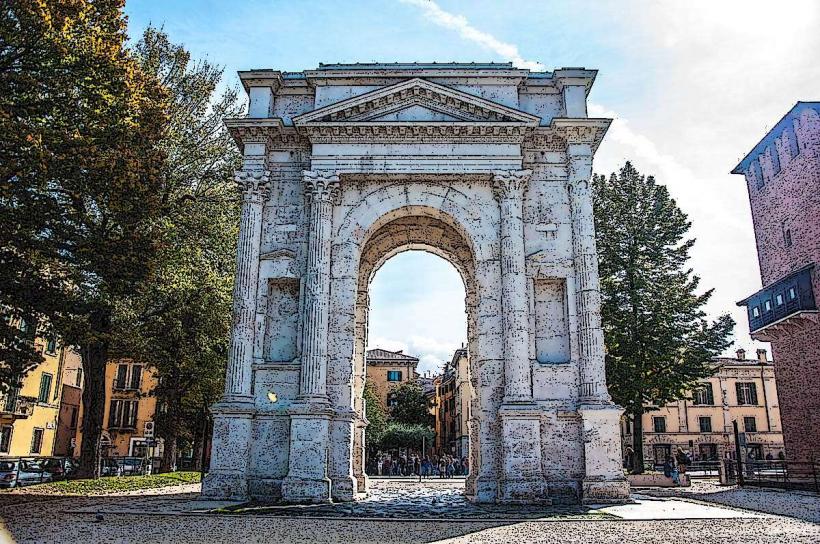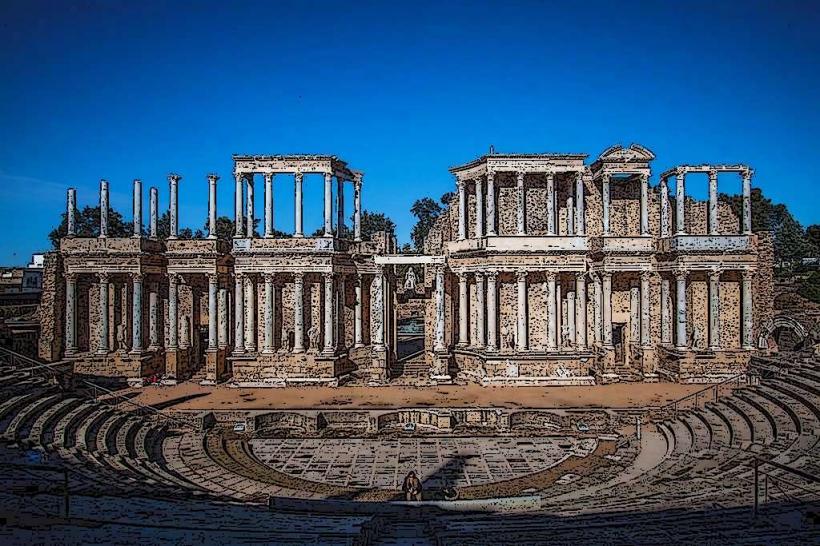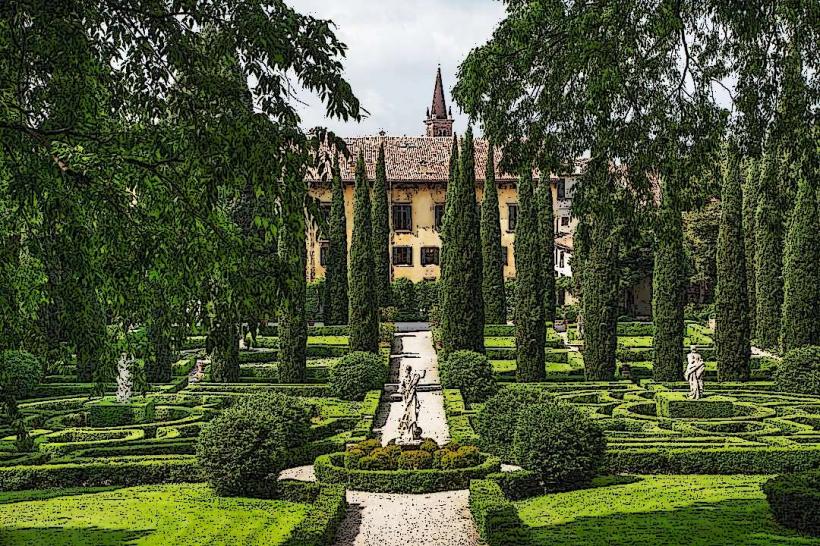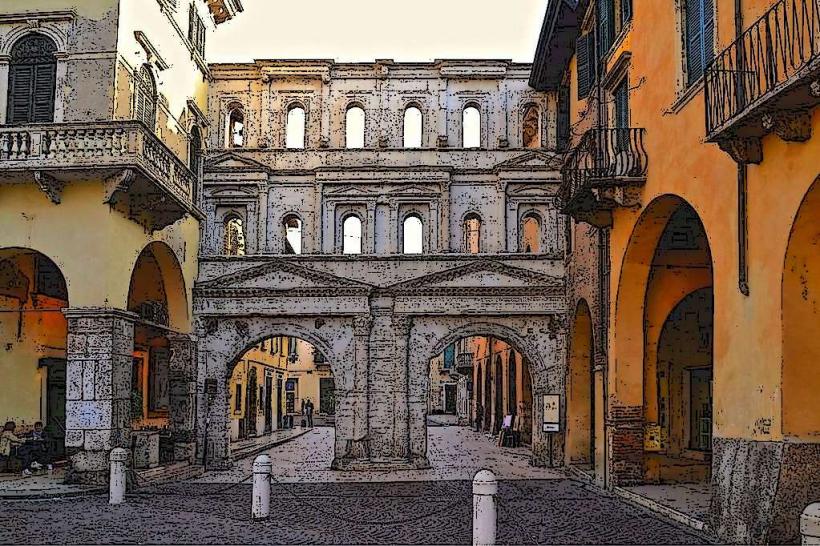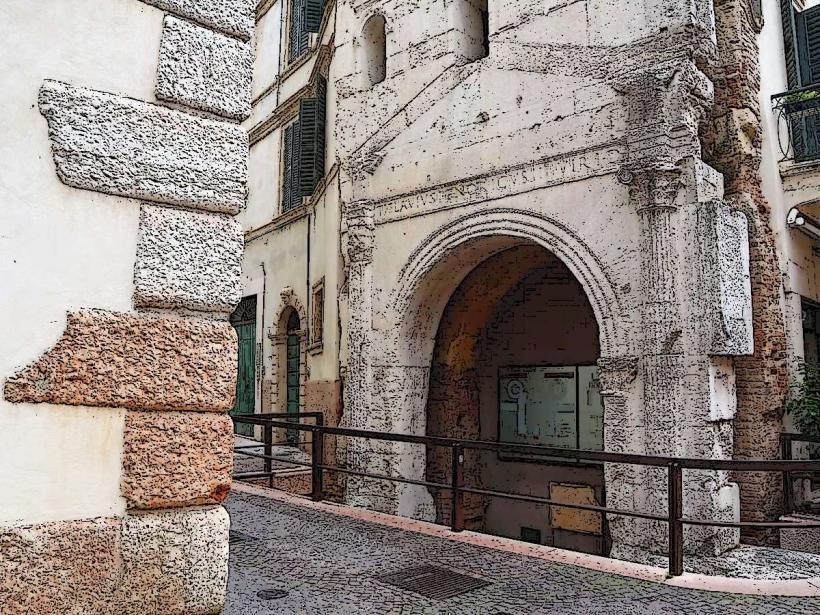Information
Landmark: Lake GardaCity: Verona
Country: Italy
Continent: Europe
Memory updated
Lake Garda, situated in northern Italy, is an exceptional natural gem that spans the regions of Lombardy, Veneto, and Trentino-Alto Adige, making it a prime travel destination for both Italians and international visitors. With its serene waters, picturesque towns, and diverse landscapes, the lake offers a rich mix of historical, cultural, and outdoor experiences. Here’s a more detailed look at Lake Garda:
Geography and Natural Features:
- Size and Shape: Lake Garda is Italy’s largest lake, measuring 51 kilometers (32 miles) in length and up to 17 kilometers (10.5 miles) at its widest point. The northern part of the lake is narrow and deep, nestled between steep mountain ranges, whereas the southern part broadens out into flatter terrain.
- Mountain and Hillside Views: The lake’s northern shore is dominated by towering mountains, part of the Alps, which create dramatic vistas. These mountains plunge directly into the water, offering a breathtaking contrast between the lush green hillsides and the clear blue lake. To the south, the land flattens out as it transitions into the plains of the Po River.
- Climate: The region has a Mediterranean climate, with warm, dry summers and mild, wet winters. The southern shores of the lake enjoy a particularly warm microclimate, allowing for the cultivation of citrus fruits, olive trees, and vineyards. The presence of these crops is a testament to the favorable weather conditions, which attract both nature lovers and agricultural producers.
History and Cultural Heritage:
- Ancient Origins: Lake Garda has been an important settlement area since Roman times, thanks to its strategic position. The Romans utilized its natural resources, such as fresh water and the fertile surrounding lands, and established various towns along its shores. Sirmione, in particular, is home to the ruins of a Roman villa, the Grotte di Catullo, named after the famous poet Catullus.
- Medieval Influence: During the Middle Ages, the region’s strategic importance continued, especially for the medieval warring families, which resulted in the construction of fortifications and castles. The Scaligero Castle in Sirmione and Malcesine Castle are prime examples of the fortresses built by the noble Scala family during the 13th century.
Towns and Villages Around Lake Garda:
Each town around the lake has its own charm and character, offering a distinct experience for visitors. Here are some of the most notable towns:
Sirmione: One of the most famous towns on Lake Garda, Sirmione is located on a thin peninsula on the southern shores. The town is renowned for its thermal baths, which have been used for centuries for their therapeutic properties. Visitors can explore the Grotte di Catullo, the ruins of a Roman villa, and stroll along the town's narrow streets filled with boutiques and restaurants. The Scaligero Castle, an imposing medieval fortress with a moat, is another highlight.
Desenzano del Garda: This town lies at the southwestern corner of the lake and is one of the largest and most vibrant towns. It boasts a bustling harbor with a promenade lined with cafes and restaurants, offering stunning views of the lake. The historical center has an abundance of shops, and the Roman Villa with its beautiful mosaics adds a touch of antiquity to the town's charm.
Malcesine: Located on the eastern side of Lake Garda, Malcesine is famous for its well-preserved medieval center and the Castello Scaligero, which offers panoramic views of the lake. The town is also a gateway to Monte Baldo, which is accessible via a cable car. The mountain offers hiking trails, cycling routes, and spectacular views over the lake and surrounding areas, making it a year-round destination for outdoor enthusiasts.
Riva del Garda: Situated at the northern tip of Lake Garda, Riva del Garda offers a combination of mountains and lakeside beauty. This town is a haven for those who enjoy outdoor sports, especially windsurfing, mountain biking, and hiking. Its old town is filled with narrow alleys, historical buildings, and picturesque squares, making it a great place to explore on foot.
Bardolino and Garda: These two neighboring towns, located on the eastern shore of the lake, are famous for their vineyards and wineries. Bardolino, in particular, is renowned for its red wine made from the Corvina grape. The lakeside promenades in both towns are lined with cafes and ice cream shops, offering a perfect place to relax and enjoy the view.
Outdoor Activities and Attractions:
- Water Sports: Lake Garda is a haven for water activities. The lake’s winds, especially the Ora and Peler, make it one of the best places in Europe for sailing and windsurfing. The northern part of the lake, with its more intense winds, is a hotspot for enthusiasts. Visitors can also rent boats, paddleboards, or take part in fishing trips.
- Hiking and Cycling: The surrounding mountains offer a wealth of hiking and cycling opportunities, with trails that range from easy lakeside walks to challenging mountain routes. Monte Baldo, often referred to as the "Garden of Italy," has well-marked trails and is accessible via a cable car that transports visitors from the lake up to 2,000 meters above sea level. The area is rich in flora and fauna, with views of the lake below.
- Vineyards and Olive Groves: The southern shores of Lake Garda are dotted with vineyards producing local wines, including Lugana (a white wine) and Chiaretto (a rosé). Olive oil is also an important product, with several mills offering tours and tastings.
Historical Sites and Cultural Experiences:
- Villas and Gardens: The area around Lake Garda is dotted with historic villas and beautifully manicured gardens. Villa Borghese in Sirmione is one of the most famous villas, while Villa degli Olivi in Gargnano boasts beautiful terraced gardens. Many of these villas are open to the public and often host cultural events, such as classical music concerts and art exhibitions.
- Museums and Art: The area also has a range of museums, such as the Museo di Riva del Garda, which is dedicated to the region’s history and culture. Additionally, several art galleries showcase both contemporary and traditional Italian art.
Culinary Delights:
The cuisine around Lake Garda reflects the variety of its regions. In Lombardy, you’ll find hearty northern Italian dishes like risotto with perch (a type of local fish). Veneto offers dishes like bigoli pasta and polenta, while Trentino-Alto Adige adds a touch of Tyrolean flavor with speck (smoked ham) and strudel. Visitors will also find many fresh fish dishes from the lake, such as lavarello and sardine.
Conclusion:
Lake Garda is not just a destination; it’s an experience that combines natural beauty, rich history, cultural heritage, and outdoor adventure. Whether you're exploring its medieval towns, hiking the surrounding mountains, relaxing by the lake, or indulging in fine wine and local cuisine, Lake Garda offers a multifaceted experience for all kinds of travelers.

